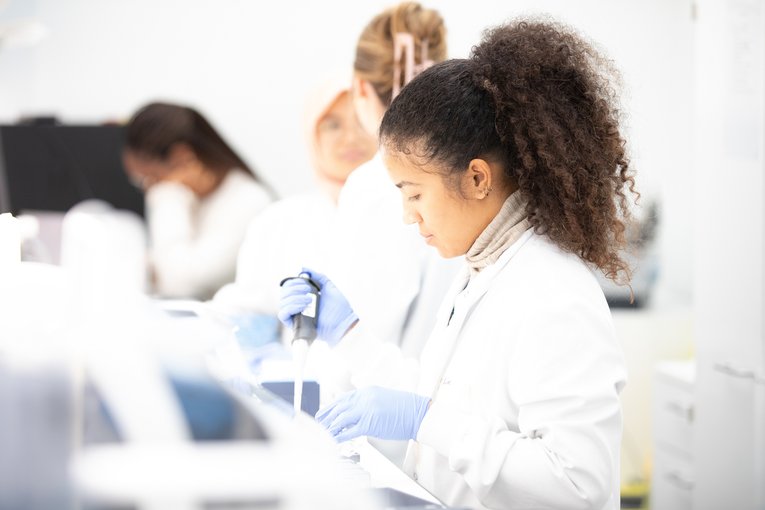
https://www.gosh.nhs.uk/news/great-ormond-street-hospital-second-world-war/
Great Ormond Street Hospital in World War II
8 May 2020, 8 a.m.
To mark Victory in Europe Day (VE Day) we step back in time and take a look at what was going on at Great Ormond Street Hospital during the outbreak of the second World War.
GOSH during the outbreak of war
GOSH was founded in 1852, only offering treatment to children—the first hospital in the UK to specialise in paediatrics. As well as the site in Bloomsbury, where the hospital is still based, it also had a Country Branch at Tadworth Court in Surrey, which allowed children to recuperate in much fresher air than in central London.
Planning of emergency services started in the late 1930s but negotiations between the Ministry of Health and the many different voluntary hospitals took time. The overall aim was to develop first aid and casualty clearing stations backed up by advanced base stations further out of harm’s way.
The Emergency Medical Services (EMS) went live at the outbreak of war, with existing patients discharged or evacuated out of central London to make room for the vast numbers of air raid casualties expected within days.
GOSH was designated a casualty clearing station for all ages of patients (not just children and young people).
Everyday life at GOSH during wartime
In 2000, Dr John Angus Black, a former GOSH medical student and staff member, remembered his time at GOSH during 1941 and 1942. In Archives of Disease in Childhood he recounts:
“I was therefore delighted to be asked, in the summer of 1941, to join the team of UCH students resident at Great Ormond Street. In exchange for helping with air raid casualties (there were none during my period of residence) and conducting a weekly blood donor session, we were given free board and lodging and were allowed to attend the work of the hospital. Our other duty was to organise the Christmas show, which enabled us to lampoon the consultants and other staff in a series of comic sketches.
We lived on the top floor of the nurses' home…we shared the nurses' sitting room and had our meals in the doctors' dining room in the hospital. This was run by Ellen Dowling, a stout motherly Irish woman whose special care was her “boys”, and by Lavinia Watson, a forthright young woman from Maltby in Yorkshire, who enjoyed teasing us about our posh accents. These two were more important to our welfare than anyone else in the hospital.
Ward rounds at Great Ormond Street were formal affairs. Starting at 09:30 or 10:00 in the morning or at 14:00 in the afternoon, the consultant, accompanied by his registrar and houseman, combined the examination of his patients with informal discussion and teaching.
At the end of the ward round the consultant and his retinue retired to sister's sitting room for coffee and biscuits or tea and cake."
The Management team during the war
During the outbreak of war, GOSH was under the leadership of Robert Skeoch Frew as Chief Medical Officer, supported by Dorothy Lane as Matron and Herbert Rutherford as Hospital Secretary.

Dr Robert Frew
Robert Skeoch Frew was a Canadian, born in Newfoundland 22 August 1881.
Robert completed his medical training in Edinburgh, followed by stints as Medical Registrar at the Royal Infirmary. He held the same post at GOSH from 1910, becoming Clinical Assistant in Outpatients in 1913 and Outpatient Physician in 1919. The 1939 register showed him as a Physician at GOSH.
Robert died 30 May 1955. His obituary in the British Medical Journal in 1955 described him during World War Two as: "Tall, erect, meticulous in dress, quick in action and speech. A skilful teacher, popular with students despite the many odd and unorthodox views elaborated in his 1936 publication Disorders of Children."

Matron Dorothy Lane inspecting bomb damage
Dorothy Annie Lane was born 24 November 1894 in Southwark. She joined GOSH in 1935, following stints as Matron at East London and the Royal Buckinghamshire Hospital. In the meantime, she had also trained as a Midwife, joining the register in 1928. The 1939 register showed her as Matron of the Voluntary Hospital (at GOSH).
"Dorothy Lane was the Matron; a small woman, she wore an elaborate lace cap precariously balanced on thinning grey hair. Dorothy Lane had a great presence and was held in awe and affection by the nurses." [Source: Black JA Great Ormond Street in 1941 and 1942 Archives of Disease in Childhood 2000;82:84-87.]
Dorothy died in Gerrards Cross in 1989.

Herbet Rutherford with Matron Dorothy Lane and the Indian Minister of Health
Herbert Francis Rutherford was born in 1893 in Chesterton, Cambridgeshire, son of a University Librarian at Cambridge. Herbert joined the Freemasons in 1921 and was given the freedom of the City of London in 1924. He succeeded the long-serving James McKay as Hospital Secretary of GOSH in 1932, having previously held the same post at the Metropolitan Hospital at Dalston. Herbert retired from GOSH and died in Dorking in 1953.
GOSH during WWII booklet (0 bytes)
Learn more about GOSH during the outbreak of war and the individuals commemorated by downloading our ![]()

GOSH Consultant, Dr Emma Clement, joins the North Thames Genomic Medicine Service
Dr Emma Clement has joined the NT GMS as Deputy Medical Director.

Fifth annual 'Moment of Discovery' image competition open 5-18 January
The annual Research and Innovation Image Competition, A Moment of Discovery, is back for the fifth year and open for entries between 5-18 January 2026.

Arsenal stars bring festive cheer to patients, families and staff
GOSH was buzzing with excitement this month as players from Arsenal’s men’s and women’s first‑team squads paid a special visit to children, families, and staff.

NIHR launches £13.7m investment into brain tumour research
The National Institute for Health and Care Research (NIHR) has announced a £13.7 million investment that will support ground-breaking research to develop novel brain tumour treatments in the UK.
